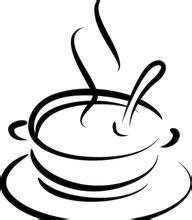Soft, aromatic Rwandan Chimaire Estate Coffee Flavor Characteristics
The provinces prior to 2006 are as follows: Butale (Butare), Biwamba (Byumba), Shanggu (Cyangugu), Gitalama (Gikongoro), Giseni (Gisenyi), Gitarama (Gitarama), basic Gu (Kibungo), Kibuye (Kibuye), Kigali City (Kigali), Kigali-Ngali (Kigali Rural), Ruhengeri (Ruhengeri) and Umtala (Umutara).
A new administrative division will be implemented on January 1, 2006. The whole country of Rwanda is divided into four provinces (intara), the Province de province (intara), the north province (Province du Nord), the western province (Province de province), the southern province (Province du Sud), the city of Kigali (Ville de Kigali) and one municipality (Kigali), with 40 counties and cities (akarere) and 416 townships (umujyi).
Before 1 January 2006, the country was divided into 12 provinces. Later, in order to solve the problems caused by the massacre in Rwanda in 1994, the government decided to reorganize the political district. The first reason is the decentralization of power to the local authorities, because the authorities believe that the excessive concentration of government power is the main factor leading to genocide, and the second is to diversify the ethnic groups in the various districts so as to reduce the division between ethnic groups. [2]
Capital
Located in the central part of Rwanda, Kigali, which was founded in 1907, is the political, economic and cultural center of the country. It covers an area of 730 square kilometers and has a population of 1.13 million (2013), 70 per cent of which are in the suburbs. The city of Kigali, with its pleasant climate, tidy appearance, orderly traffic and good security, is considered one of the safest capitals in Africa. In 2008, it became the first city in Africa to win the UN Habitat Award. The watershed between the Congo basin and the Nile basin runs from north to south through Rwanda. About 80% of the country is drained from the Nile and about 20% draw water from the Ruzizi River and Lake Tanganyika. The longest river in the country is the Niabalongo River (Nyabarongo River) in the southwest, which turns north, east and southeast into the Ruwuwu River and forms the Kagera River, which flows due north along the eastern border of Tanzania. Both the Niabarongo River and the Cagella River will eventually flow into Lake Victoria. There are many lakes in Rwanda, of which Lake Kivu is the largest. The lake is located at the bottom of the Aberdeen Rift Valley and extends along the western border of Rwanda. With a maximum depth of 480 meters, it is one of the 20 deepest lakes in the world. Several other larger lakes include Lake Burera, Lake Ruhondo, Lake Muhazi, Lake Rweru and Lake Ihema, of which Aishma is the largest in a series of lakes in the eastern plain of Akagera National Park.
There are about 33000 hectares of coffee plantations in Rwanda, with 500000 people engaged in the coffee industry. With the good natural conditions of high altitude and fertile volcanic soil, the country's fertile soil and suitable climate contribute to plant growth, and coffee trees seem to be driven or forced to grow upward, or because they grow too fast to produce the best coffee beans. The beautiful country of thousands of hills Rwanda has a long and rich culture for growing highland coffee, mainly high-quality Arabica coffee. Rwanda is the only country in the world that can fully enjoy the harmony between soil, altitude and climate. In this unique growing environment, high-quality coffee from Rwanda has a distinctive taste and aroma. Bourbon coffee grown in Rwanda is one of the original varieties of Arabica coffee.
Rwanda water washing method
Rwanda coffee is absolutely high quality in the form of washed Arabica beans. As far as Africa is concerned, its coffee industry is remarkable because the country thrives mainly by producing the best possible coffee beans. Coffee from Rwanda is becoming more and more popular in the international market.
The mission of the Rwanda Coffee Association is to manage and supervise the operation of the coffee industry in Rwanda from production to sale. The recently revised mission focuses on policy formulation and implementation, with more emphasis on the need to improve the professionalism of the coffee industry and to increase marketing efforts. Since its establishment, the Rwanda Coffee Association has promoted the Rwandan coffee culture and promoted the influence of Rwandan coffee. The taste of Rwandan coffee is described as "grass aroma" with tropical climate characteristics. In addition to the sweet fruit taste of this coffee, it also gives people a feeling of freshness, clearness and freshness. Bourbon coffee grown in Rwanda is amazing for its sweet fruit, full-bodied, unrestrained and lingering aftertaste. This coffee has a delicious, citrus sweetness and a deep chocolate color.
Flavor: soft, fragrant, full of particles
Suggested baking method: deep baking
★★: good
The market for Rwandan coffee:
Rwanda coffee is absolutely high quality in the form of washed Arabica beans. As far as Africa is concerned, its coffee industry is remarkable because the country thrives mainly by producing the best possible coffee beans. Coffee from Rwanda is becoming more and more popular in the international market.

Important Notice :
前街咖啡 FrontStreet Coffee has moved to new addredd:
FrontStreet Coffee Address: 315,Donghua East Road,GuangZhou
Tel:020 38364473
- Prev

Introduction to the characteristics of the coffee flavor and taste of Renas Manor in El Salvador
From 1549 to 1763, El Salvador was the first capital of Brazil, witnessing the fusion of European, African and American cultures. As the slaves arrived in El Salvador in 1558 to work in sugar cane plantations, it also became the first slave market in the new world.
- Next

Introduction to the flavor and taste of Panamanian jadeite manor coffee with light cocoa flavor
Panama is located on the Panamanian isthmus in Central America, bounded by Colombia to the east, the Pacific Ocean to the south, Costa Rica to the west and the Caribbean Sea to the north. The territory is S-shaped to connect North and South America, and the Panama Canal connects the Atlantic and Pacific oceans from north to south. It is known as the bridge of the world. [5] Panama has an area of 75517 square kilometers and a land length of 772km. Panama has many rivers.
Related
- Does Rose Summer choose Blue, Green or Red? Detailed explanation of Rose Summer Coffee plots and Classification in Panamanian Jade Manor
- What is the difference between the origin, producing area, processing plant, cooperative and manor of coffee beans?
- How fine does the espresso powder fit? how to grind the espresso?
- Sca coffee roasting degree color card coffee roasting degree 8 roasting color values what do you mean?
- The practice of lattes: how to make lattes at home
- Introduction to Indonesian Fine Coffee beans-- Java Coffee producing area of Indonesian Arabica Coffee
- How much will the flavor of light and medium roasted rose summer be expressed? What baking level is rose summer suitable for?
- Introduction to the characteristics of washing, sun-drying or wet-planing coffee commonly used in Mantenin, Indonesia
- Price characteristics of Arabica Coffee Bean Starbucks introduction to Manning Coffee Bean Taste producing area Variety Manor
- What is the authentic Yega flavor? What are the flavor characteristics of the really excellent Yejasuffi coffee beans?

